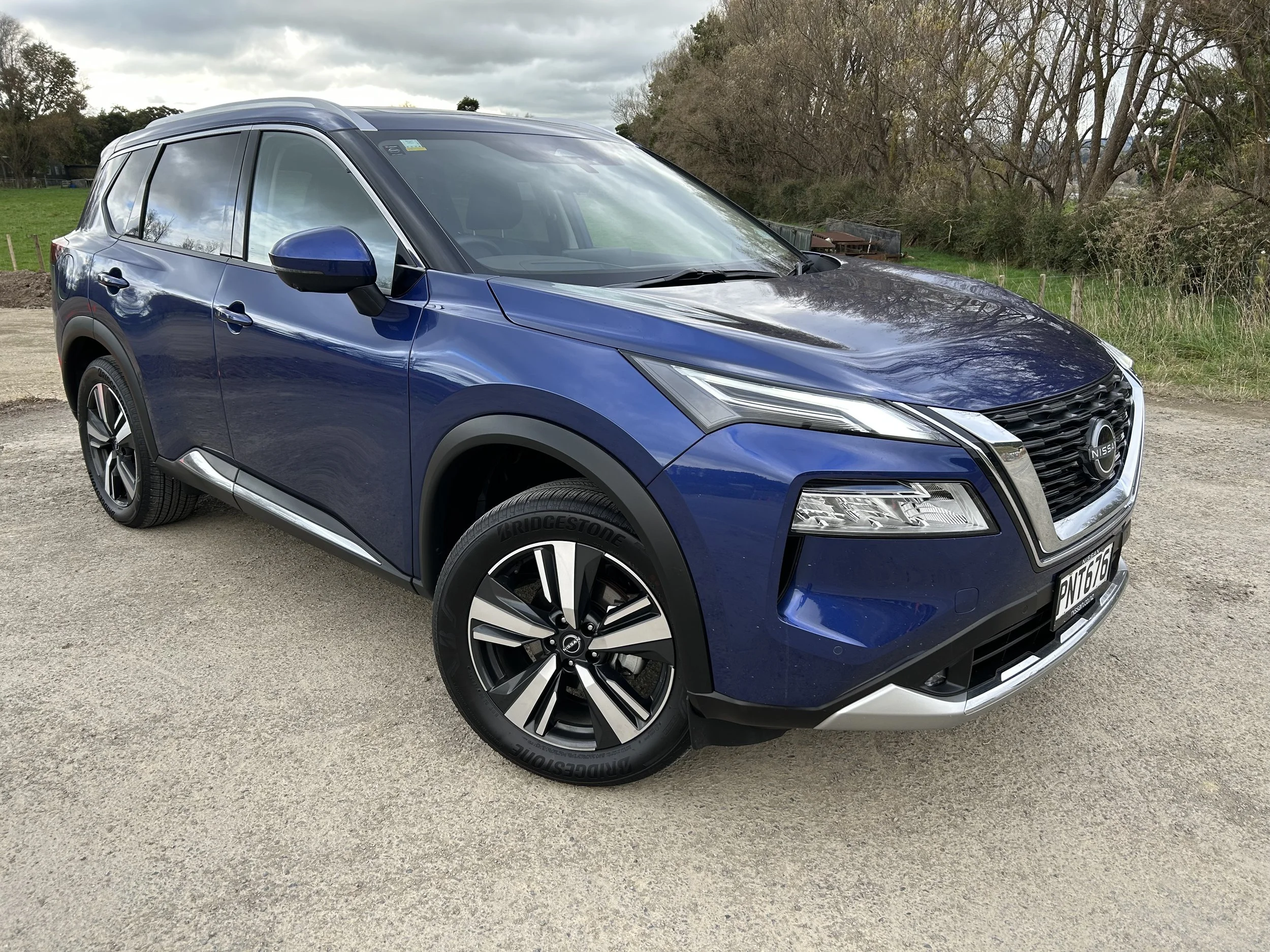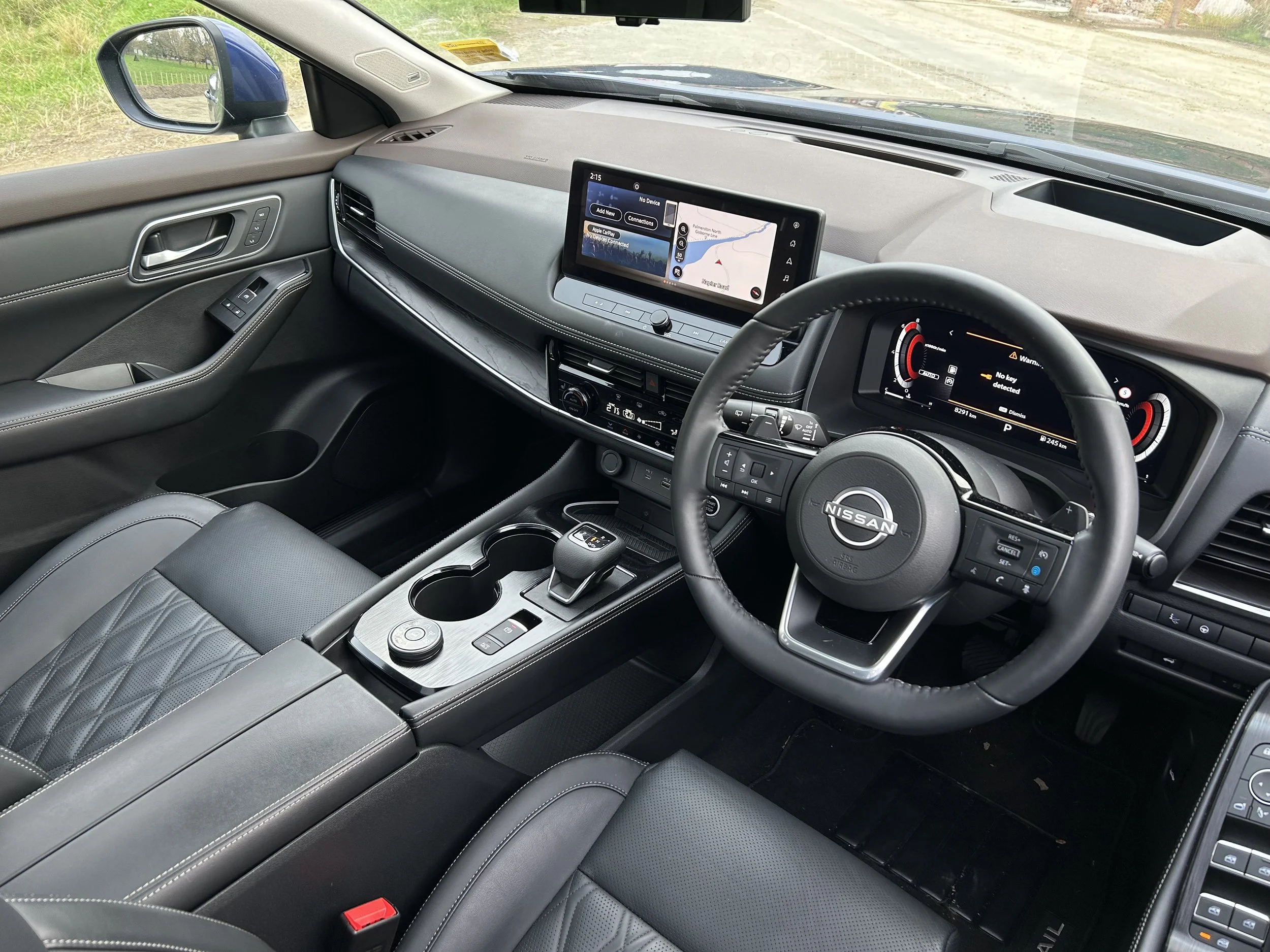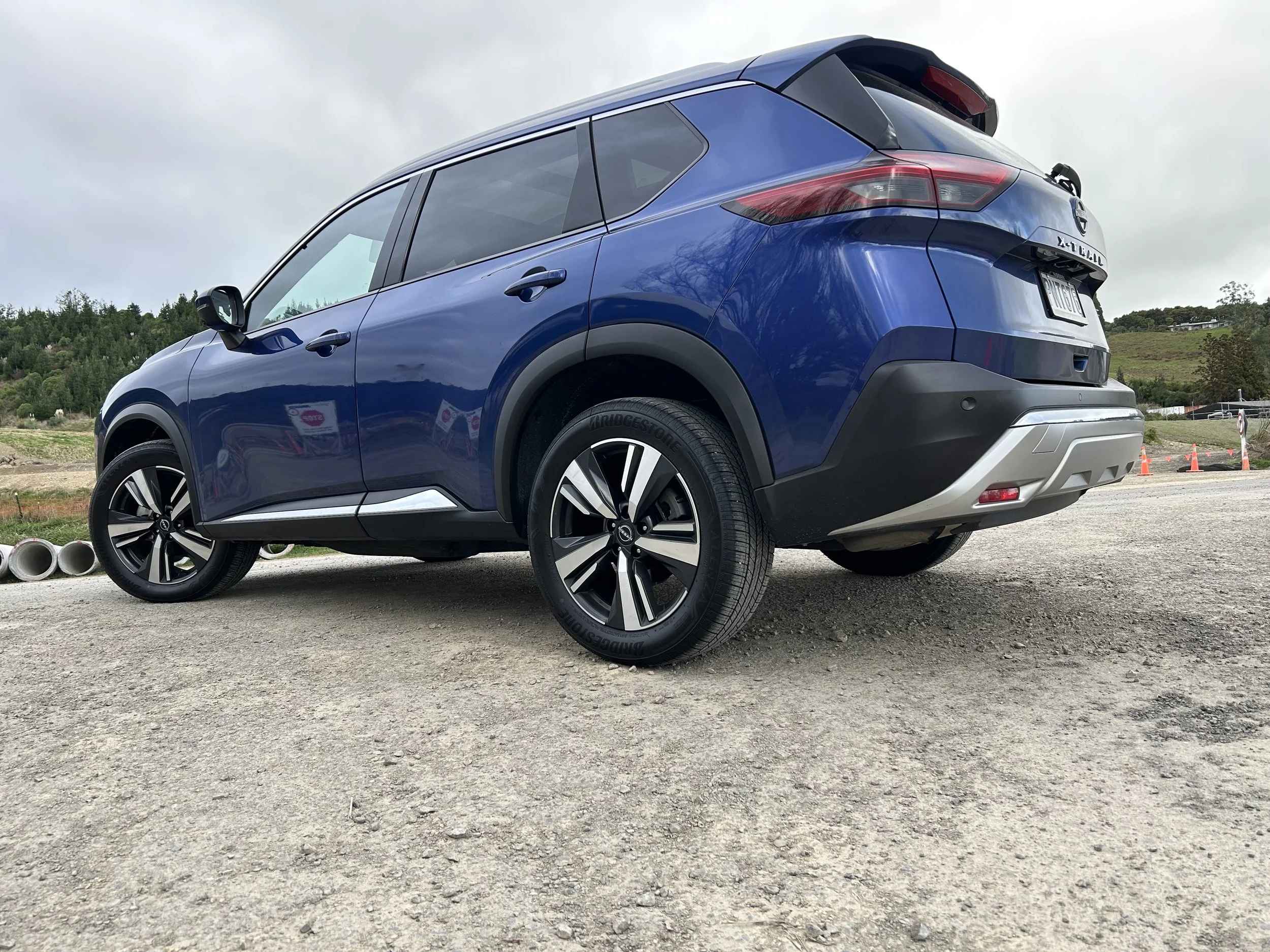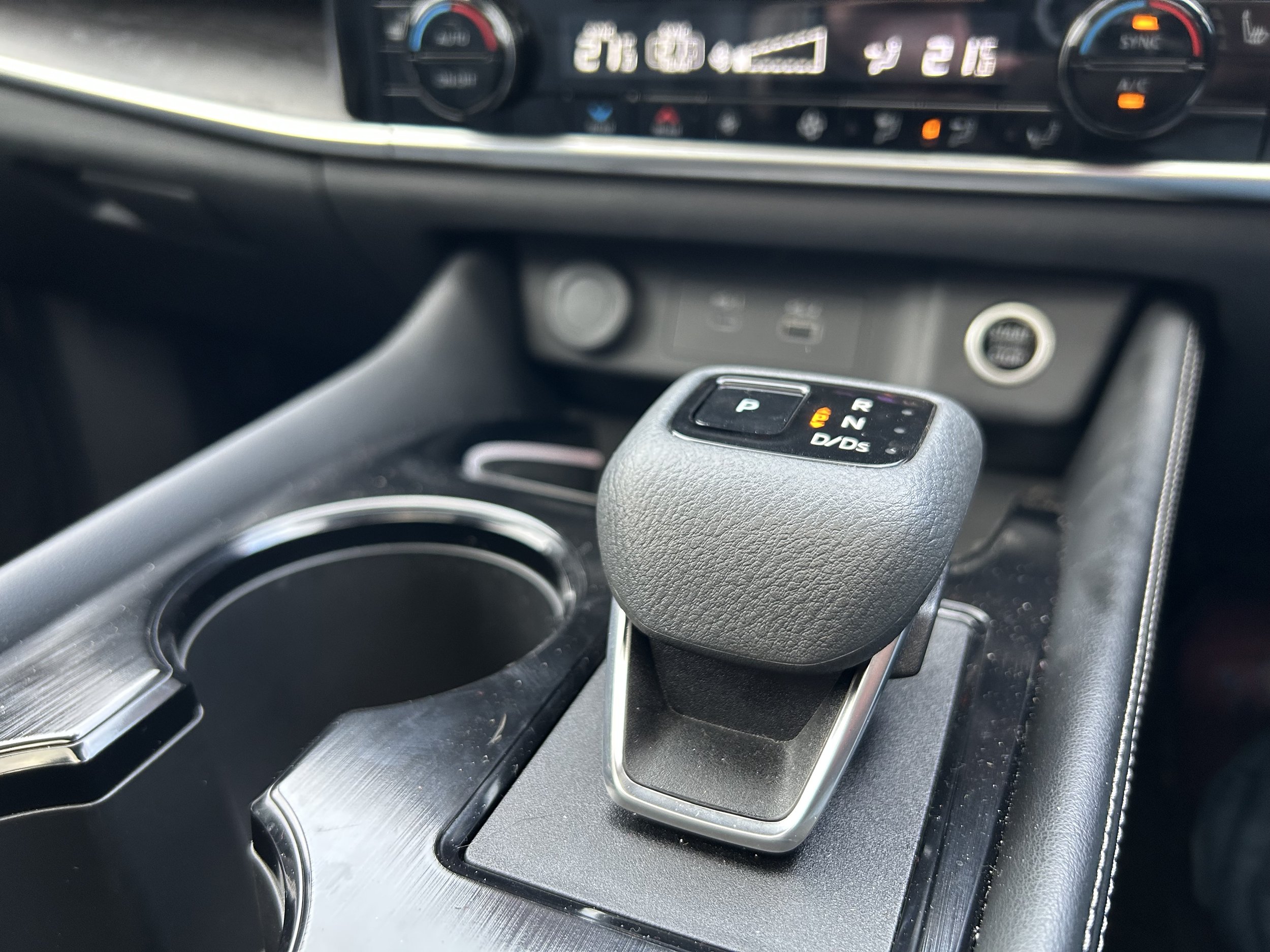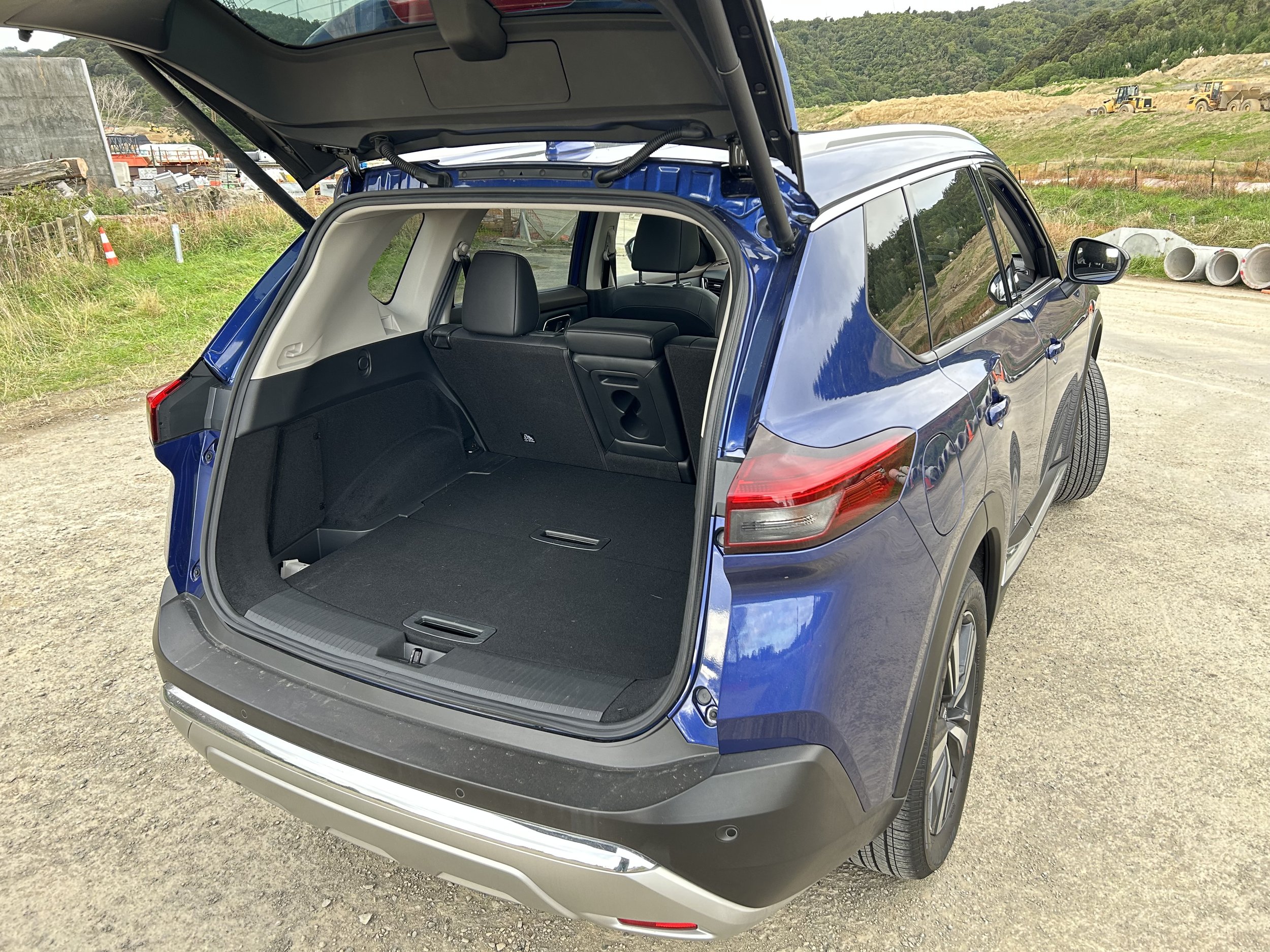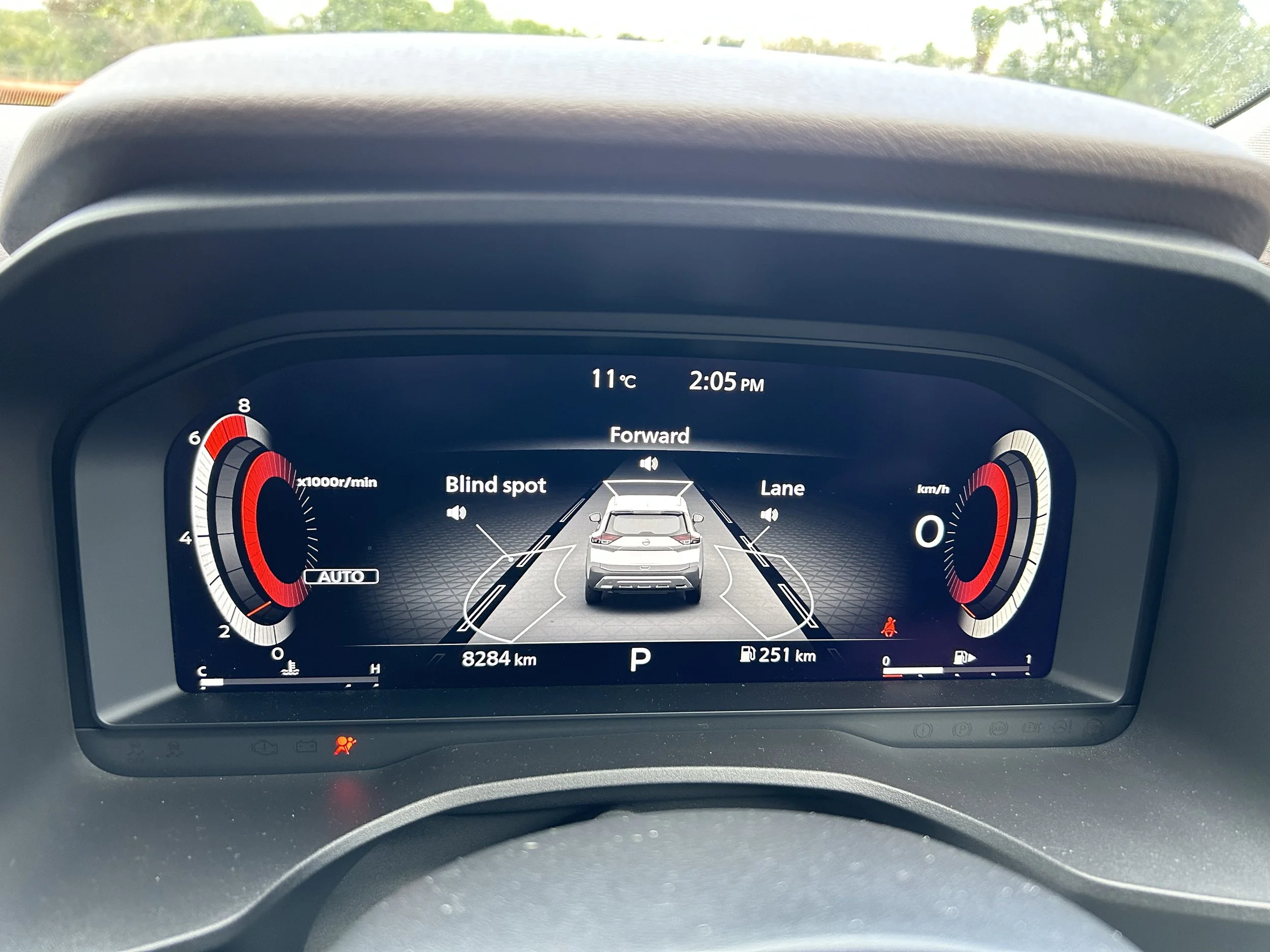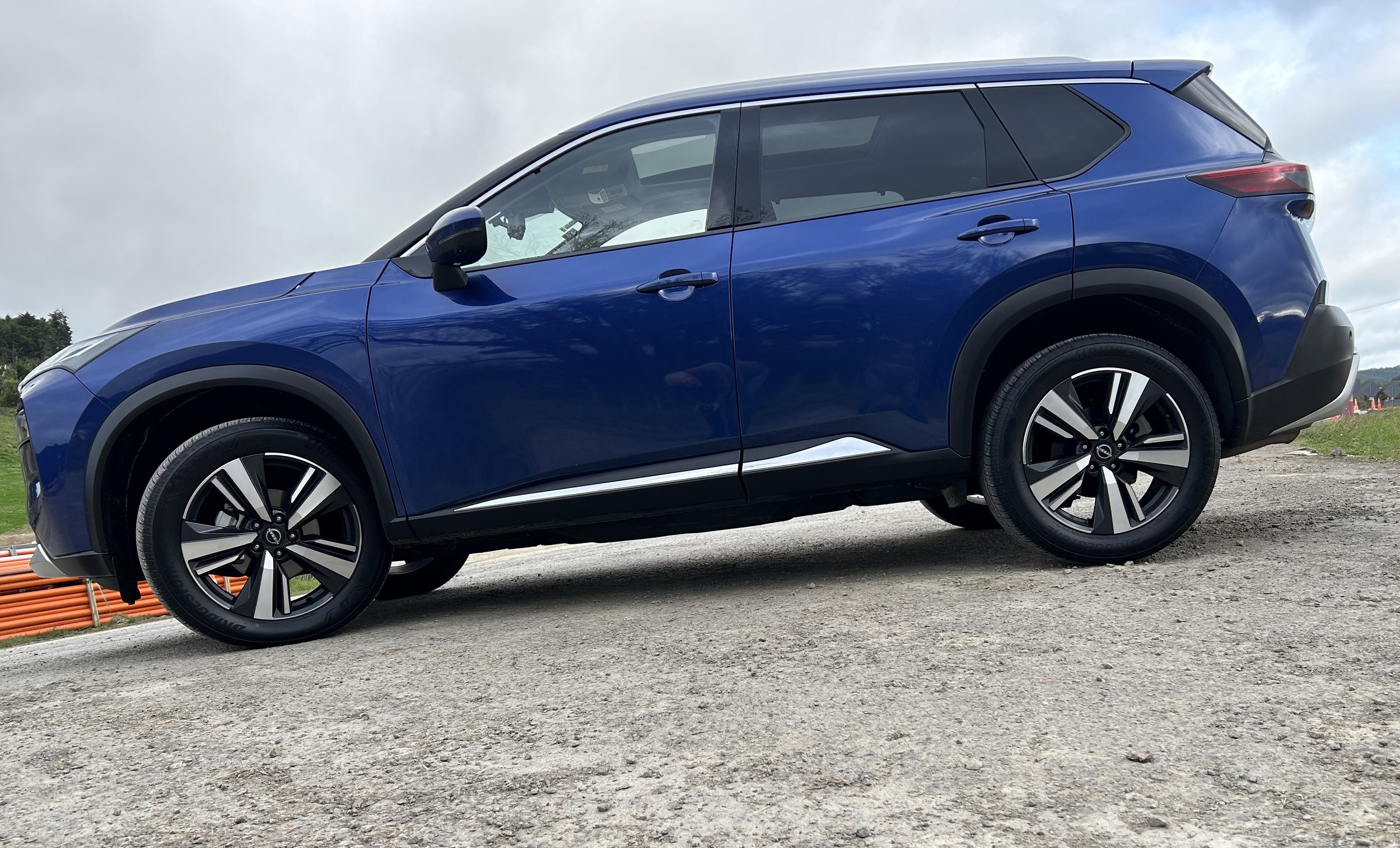Nissan X-Trail 2.5 Ti-L roadtest review: Back with the in-crowd
/An intelligent design approach brings this model back into the fold.
Price: $59,990 plus $3680 Clean Car fee.
Powertrain: 2.5-litre four-cylinder petrol, 135kW/244Nm, CVT, 8.7 litres per 100km cited economy, 204 grams per kilometre CO2.
Vital statistics: 4680mm long, 2065mm wide, 1725mm high, 2705mm wheelbase, 560 litres luggage capacity, / R tyres.
We like: New design, technology uplift, improved CVT.
Not so much: Engine’s Clean Car hit, lane keep over-zealous in NZ conditions.
HOW long since anyone dared suggest the Nissan X-Trail was an one of the leading lights of the medium sports utility wagon class?
Rhetorical question, of course. It’s been a long while. The previous X-Trail has, for at least the last four years, increasingly felt out of sorts with its competition, and little wonder. Nothing else in this category dared over-stay as long.
Just to remind. That preceding, third generation car, dated back to 2013. A big news story of that year was something we’re surely all rightly unfussed by now: NZ legalising same-sex marriage. Old cars can still be good cars, but everything has a use-by date and the preceding X-Trail should by all rights have exited no later than 2020.
But it didn’t and by instead asking it to stay on until late last year - a good two years after North America received the replacement, which they call the Rogue - a high price has been paid. In one of the market’s most vital and vibrant sectors, Nissan has downgraded from being a central character to minor involver; overshadowed by so many others.
Now it has a real fight on its hands to re-establish credibility against so many that have taken advantage since. The Toyota RAV4 is the category champ for registrations count, but it’s far from being the only serious rival.
The Mazda CX-5, Hyundai Tucson, Kia Sportage, Subaru Forester and XV/Crosstrek and the Mitsubishi Outlander have all risen in importance. The Volkswagen Tiguan, Ford Escape. Peugeot 3008 and perhaps even the Citroen Aircrews have also come into the fray and, to varying degree, are making their mark.
Now, at last, we have a fresh X-Trail that, aside from continuing in as-tested form, with the same constantly variable transmission and 2.5-litre as before (though with 9kW more power and 30Nm additional torque) and also sharing significant architecture - up to in-cabin elements including the digital display technology - with the Mitsubishi Outlander, is properly new,.
That goes well beyond the sharper-lined styling; it’s a bigger car delivering more passenger space, better cabin quality and excellent safety features, remaining as practical as ever while also presenting as a far more polished offering.
For these reasons, though it is late to a well-subscribed party, it should be regarded as a very welcome guest. There is so much about it that will lift owner and seller confidence.
More than just shape has revised. How it shapes up is also revised.
The line-up is now topped by two five-seaters with an innovative 150kW/330Nm ‘e-power’ range-extender hybrid, using a turbocharged 1.5-litre petrol engine, not to create mechanical propulsion but to generate electricity to charge a compact 2kWh battery. That in turn powers an electric motor on the front axle and a second motor on the rear, to enable all-wheel-drive. This will hopefully avail for test, soon.
The e-power car also represents in the flagship Ti-L specification driven today, but with a $7000 premium, and slots in the mid-level ST-L grade. These are the first X-Trails to sit in the $60,000-$70,000 band and they are more expensive than the sector-dominating Toyota RAV4 Hybrid and the Hyundai Tucson Hybrid, but the drivetrain systems are not alike, with Nissan’s setting a new convention.
The 2.5-litre petrol X-Trail still carries the bigger role for Nissan NZ nonetheless, as it runs in five variants, starting from $47,990 and topping with this tester than leaves $10 change from a $60k outlay.
The petrol-pure lineup has the ST and ST-L front-drive variants that were seven-seaters regressing to five chairs now, while all-wheel-drive editions that were five chair cars become to seven seaters. Only the Ti-L petrol on test retains in completely the same five-chair format as before, but with a $3k price lift
Nissan NZ is signalling that however it delivers, this X-Trail represents as their “most advanced SUV to date.” A lot of that has to do with the new platform, called CMF, which also employs for the Qashqai and it shares from partner brands Renault and Mitsubishi.
This delivers not only a new structure but also a big uplift in electronic support. It’s the same underpinning used by the latest Outlander and will soon show here behind the French brand, first with the Austral. Renault also uses a fully electric version, CMF-EV, for the impending Megane-E.
You can still tell it’s an X-Trail, as much as anything because it’s still a bit boxy, but the elements are now thoroughly modern and the detailing is much better.
As much as it is a smarter looking car from the outside, but the biggest improvement is with the cabin, which now presents with realistic luxury; hard plastics are pretty much banished for trims that are softer in feel and more affluent-looking.
Nappa leather is enticing and this grade comes standard with LED lighting front and rear, a heated steering wheel, Bose 10-speaker stereo, heated seats in both rows that certainly warm up fast and convincingly (maybe too much so in the back, going by user feedback), tri-zone air-conditioning, rear sunshades, a hands-free tailgate, and remote engine start.the technology is a huge step forward. All in all, it just feels a lot more upmarket.
It’s a better-suited environment for comfort, as well. There’s plenty of adjustment in the steering wheel and the front seat, so finding a suitable driving position shouldn’t be too difficult.
Passenger space in the rear falls short of being stretch-out roomy but is decent and clever, in that the seat on each side of the cabin can slide fore and aft by up to 220 millimetres to either benefit passenger legroom or create more boot space. The floor is also almost entirely flat across the rear, which enables generous legroom for anyone stuck in the middle.
Being able to open the rear doors to a extremely wide angle is especially useful; you can imagine this alone might sell the car to parents whose daily chore is to strap in small children.
Boot space-wise, it’s running mid-pack. There’s a modest 20-litre increase over the previous X-Trail, to measure 575 litres as standard. With the rear seats folded down, that cargo volume swells to 1424 litres.
Given how old the previous car was, the new couldn’t avoiding coming across as being better in its technology suite. Even so, Nissan has in many ways gone from near the back of the plane to the front, with an expansive 12.3-inch touchscreen, bolstered by a configurable 12.3-inch digital instrument cluster and an expansive 10.8-inch head-up display, surely the largest in its class.
What impresses is that this provision is more than just a box-ticking exercise. While the dashboard display’s representations of the tachometer and speedometer are a bit overdone, the overall impression is positive. Pretty much all those features function well and do the job asked of them.
As much as it relies on that aside of things, having physical short cut buttons is useful and Nissan will find favour, surely, for retaining chunky physical buttons and dials for the climate controls in preference to touch-sensitive sliders or plastic panels. There’s a decent volume knob for the stereo, too. Another plus is that Nissan hasn’t overloaded the steering wheel with buttons.
At the base of the main console are USB sockets (one USB-C, one of the older USB-A type), a 12-volt socket and the engine start-stop button while, between the seats site two well-sized cupholders, a shallow tray that is home to the wireless phone charger and a large storage box.
The stubby drive selector is one also used by the Qashqai and the Ariya electric SUV; if anything, in shape and sliding action you would imagine it’s been purpose-made for electric cars. The selector movement takes a bit of getting used to but is agreeable; the design also appeals in that it doesn’t take up much space on the centre console. There’s a rotary switch that allows you to select Eco, Normal or Sport driving modes as well as the off-road modes.
The great appeal of going to CMF, though, is that the architecture opens the door to latest safety and driver assistance systems.
Automatic emergency braking with pedestrian and cyclist detection, blind-spot warning and a lane departure prevention system are leading edge kit. There’s also adaptive cruise control and rear cross-traffic alert to help when backing out of a parking space. X-Trail not only has front, side and curtain airbags, but also a central airbag between the front seats to prevent front-row occupants from making contact in the event of a side impact. A rear-seat alert to remind you of any little ones still in the car when you exit and and trailer sway assist are nice touches, too.
The X-Trail holds a full five-star safety rating from Euro NCAP, with an impressive 91 per cent score for adult occupant protection, 90 per cent for child occupants and 70 per cent for vulnerable road users.
While the unique e-Power hybrid lends glam and potentially quirky appeal, fact is the utterly conventional 2.5 is left to do the heavy lifting on the sales side.
The powertrain falls short of being exceptional; it offers a smooth driving experience and while outright sizzle eludes, to point where the 0-100kmh dash is nothing startling, performance feels brisk as there's reasonably decent torque to keep it rowing along. Nissan claims an average fuel burn of 7.8L/100km; the result here was 9.2 litres per 100km. Not the worst for this category, not the best either. There’s some saving from it being okay with 91 octane. This engine carries a Clean Car penalty of $3680, basically double the previous impost, but the e-Power doesn’t escape being hit, either.
More tangible improvement comes from the CVT’s performance. Previously prone to annoying flare, it is much improved, now quietly slurring away on light throttle, yet responding alertly to demands for power without histrionic.
The manner in which the all-wheel-drive operates is also unobtrusive. Seriousness of off-road intent isn’t to anything like the same level than you’ll get from the Patrol, which even after all these years remains a titan of tough terrain. But it’ll do okay in light to medium conditions. It’s a good, well-tuned system for the latter. On seal and even on gravel, expect it to favour front-drive unless surface conditions erode to point where grip loss is detected. Towing went untested here as the car lacked a lowball. Maximum towing of 2000kg surely reflects the limitations, foremost, of the transmission.
Handling and ride-wise, the X-Trail errs toward comfort and refinement. It has nicely sorted steering, but the car’s weight and size factor into its demeanour. The handling is perfectly decent, but it's not a car that especially enjoys being really hustled. The ride quality is good. Maybe a little firm at low speeds on urban lumps, but otherwise pleasingly smooth. Generous suspension travel on the springs allows it to manage larger bumps and potholes well.
Among the driver assists within the ProPilot semi-autonomous driving system , the lane-keep is rather over zealous, but overall there’s nothing that is so irksome to become intolerable.
There’s no argument; the X-Trail demands attention once again. The high-end treatment isn’t the cheapest, or perhaps even the most cost-effective - that ST-L could be the more rational choice - but it is definitely back in business, albeit facing stiff competition. Toyota’s RAV4 hybrid can be bought for this money, as can a Mitsubishi Outlander.
Beyond the generally well-conceived ‘wow’ elements, it just comes across as the predecessor did in its best years - as a car users, families in particular, will appreciate for its versatility and solid design.
Those with an eye on the future, though, will likely have to give consideration to the e-Power, which is bound to raise eyebrows with its whole ‘petrol powers electric drive’ vibe.
Where even that drivetrain ultimately sits is something to be pondered, given that the latest version of the ‘Nissan Ambition 2030’ plan, the name given the brand’s strategic outlook, calls for 27 electrified models, including 19 fully electric vehicles, by 2030. The Navara ute and Patrol heavy duty off-road wagon are apparently included in that lot, so what chance X-Trail also leaping into full electric format before it’s done?

